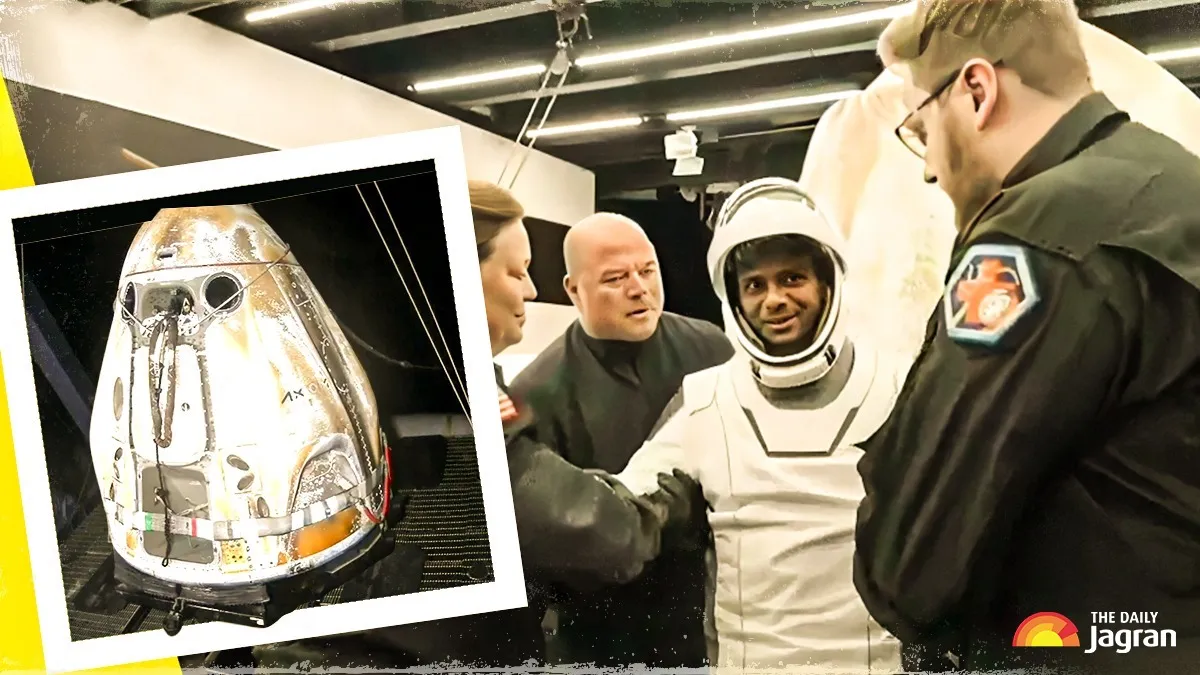- By Supratik Das
- Tue, 15 Jul 2025 04:46 PM (IST)
- Source:JND
Shubhanshu Shukla returns: Group Captain Shubhanshu Shukla, India’s first astronaut in over four decades to travel to space, has safely returned to Earth after a landmark 18-day mission aboard the International Space Station (ISS). His spacecraft, SpaceX’s Dragon ‘Grace’, splashed down in the Pacific Ocean off the California coast around 3:01 PM IST on Tuesday, concluding a 22.5-hour journey back home. The homecoming is a huge success for India's ambitious Gaganyaan crewed spaceflight program, under which more Indians are to be flown to space in the near future.
What's Inside The Dragon Capsule
While making his way back, Shubhanshu Shukla spent almost an entire day within the state-of-the-art SpaceX Dragon V2 spacecraft. The interior of the spacecraft features sleek technology and safety measures with a design intended to provide astronauts comfort and protection throughout the extreme stages of de-orbiting and splashdown. The capsule boasts approximately 380 cubic feet of pressurised volume, nearly twice the volume of previous capsules such as Apollo and Soyuz. The capsule contains seven ergonomic seats in two rows that fit astronauts tightly during the launch and landing's high-G periods. The seats are constructed of specially moulded foam that cradles each crew member's body, while the leather-like upholstery adds a modern feel.
In front of the crew, a broad control panel drops down from the ceiling. This panel consists of three large touchscreens in place of conventional switches and dials. These screens enable the commander and pilot to observe spacecraft systems, read crucial flight information, and, if necessary, manually operate docking or re-entry functions. Multiple small portholes along the sides of the capsule provide a view of space, but the astronauts primarily use the screens and sensors to navigate re-entry. As an emergency back-up, the Dragon V2 contains eight SuperDraco engines located on the sides. These high-power engines can pull the capsule off the rocket in case of launch failure and can also aid a controlled landing.
ALSO READ: Shubhanshu Shukla Returns To Earth: Parents Rejoice, Wife Breaks Down In Tears | WATCH
Each astronaut wears a custom-fitted suit that connects to the seat’s umbilical port, supplying life-support essentials like air and power during the journey. This suit-seat system is designed to protect astronauts from depressurisation and temperature fluctuations.
During the entire mission, the Dragon capsule was mostly in autopilot mode. It docked and undocked from the ISS under the control of high-precision sensors, GPS, cameras, and Lidar technology, which provided real-time information to onboard computers that ignited thrusters as required. This facilitated a glitch-free departure ahead of the de-orbit burn that put the crew on their way back.
During re-entry, the heat shield at the base of the capsule kept Shukla and his crew safe from temperatures that were greater than the surface of the Sun. After the fiery descent, four massive parachutes deployed to slow the spacecraft for a gentle splashdown.
Next Steps For India's Space Hero
Shubhanshu Shukla and his team members were recovered by a SpaceX recovery team after splashdown and are being transported to NASA's Johnson Space Center in Houston. He will go through a week-long rehabilitation program, complete with intricate medical examination to enable his body to acclimate to Earth's gravity. Shukla is likely to be officially feted by ISRO, the Indian Air Force, and other national bodies for making history in India's human spaceflight plans. His flight has set important foundations for the next Gaganyaan programme to launch Indian astronauts into space on a locally developed spacecraft.

